Your 2300 Calorie Meal Plan Just Got a Major Upgrade (And It’s Not What You Think)
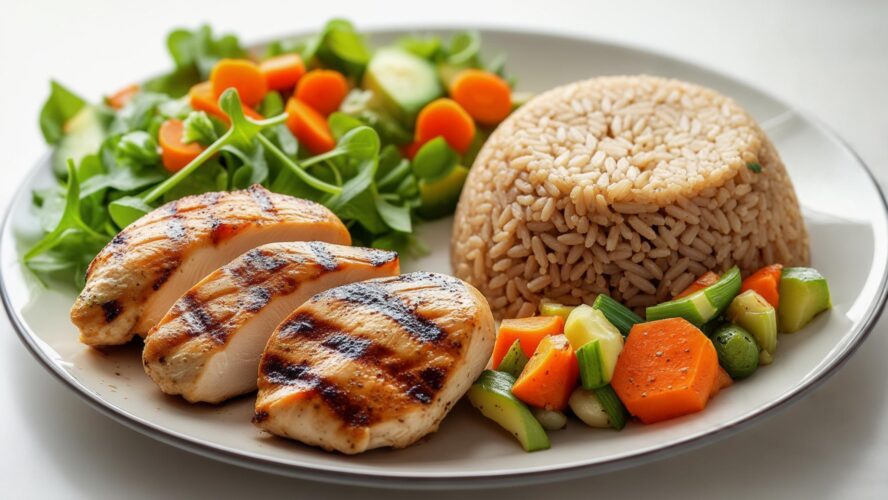
Okay, so I used to think 2300 calories was just math – eat this much, lose that much, done. But then I discovered something that totally changed my mind: according to the 2015-2020 Dietary Guidelines for Americans BetterMe, a person on a 2300-calorie diet should consume about 5½ ounces of protein daily – yet most people have no clue how to time this protein intake for maximum benefit. The real game-changer isn’t just what you eat, but when your body can actually use it.
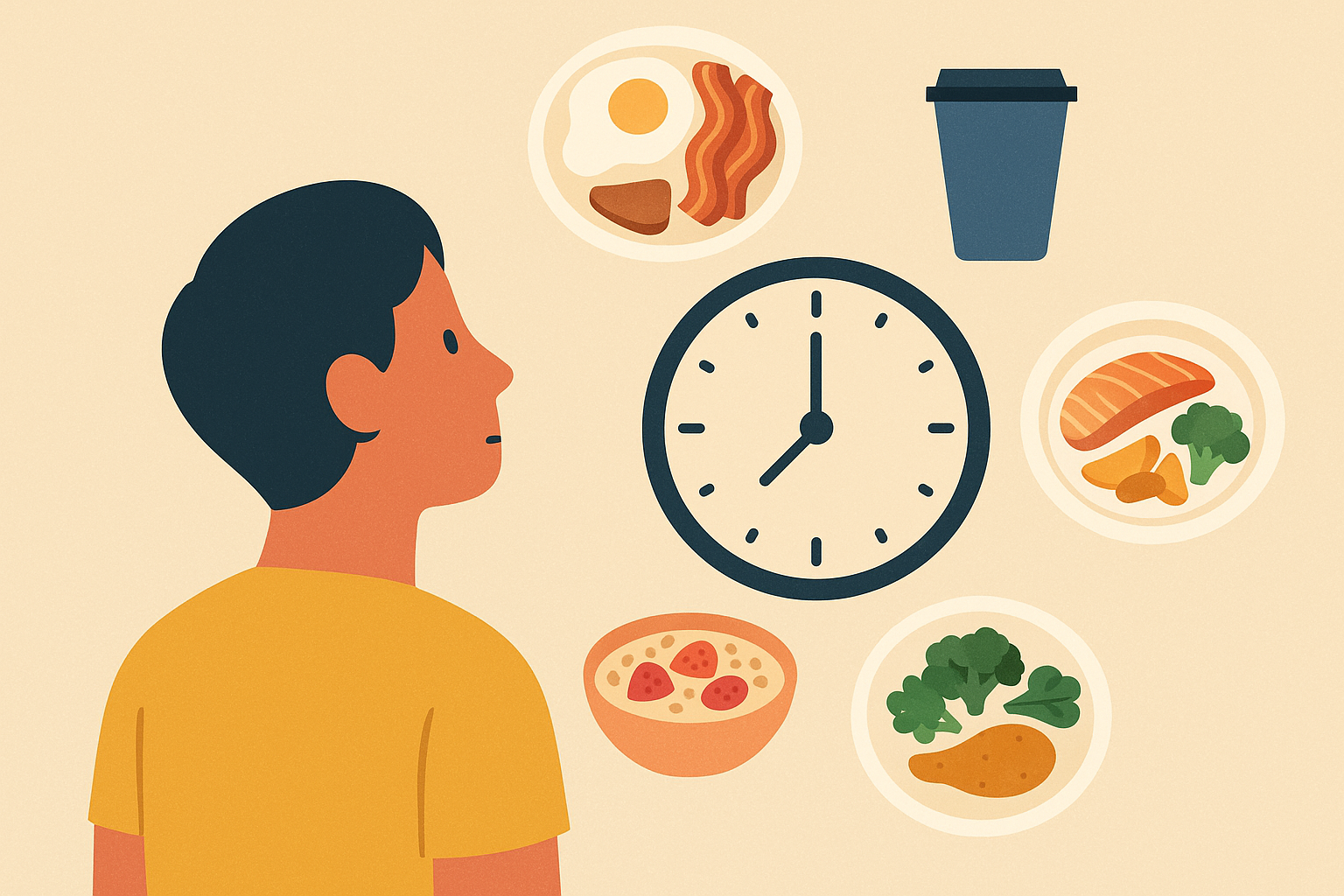
Table of Contents
- When Your Body Clock Becomes Your Best Friend
- Why Protein Timing Beats Protein Counting Every Time
- The Hidden Micronutrient Game That Changes Everything
- Making Your Metabolism Work FOR You (Not Against You)
- Turning Theory Into Your Daily Reality
- Final Thoughts
TL;DR
- So get this – I was eating the exact same oatmeal every morning for months, feeling great. Then life got crazy, I started eating it at 9 PM, and suddenly I’m bloated and can’t sleep. Same food, same calories, totally different result.
- Spacing meals 4-6 hours apart lets your body actually finish digesting instead of being in constant “processing mode” – and yeah, you’ll feel weird about not snacking at first
- Getting 150-180g protein isn’t just about chugging protein shakes – it’s about giving your body amino acids when it can actually use them
- Some vitamins are best friends, others compete for absorption – timing this stuff right is like unlocking a cheat code for how you feel
- Your genes aren’t your destiny, but they do give you clues about whether you’re a “carb person” or a “fat person” within your 2300 calorie framework
- The 40-30-30-30 protein thing sounds complicated but it’s actually pretty simple once you get the hang of it
When Your Body Clock Becomes Your Best Friend
I used to think calories were just calories. Boy, was I wrong about that. Your body’s internal clock doesn’t care that you’re eating the same oatmeal – it processes those carbs totally differently at 7 AM versus 7 PM.
The whole game changes when you start working WITH your natural hormone fluctuations instead of against them. You know that natural wake-up energy you get in the morning? That’s cortisol doing its job – and it’s basically your body saying “Hey, I’m ready to handle some serious fuel right now.”
Understanding your body’s natural rhythms is similar to how women can optimize intermittent fasting by working with their hormonal cycles rather than against them. When you align your 2300 calorie meal plan with these biological rhythms, everything becomes easier.
Speaking of timing, even fast food chains are recognizing the importance of meal composition. Recent analysis from “Eat This, Not That” shows that “the average American consumes more than 3,400 milligrams of sodium every day, according to the American Heart Association (AHA)” – highlighting how poor meal timing and food choices compound throughout the day to create metabolic chaos.
Your Morning Carb Window Is Pure Gold
Here’s what blew my mind: that morning cortisol spike everyone complains about? It’s actually your metabolism’s way of saying “feed me carbs NOW.”
Between 6-8 AM, your body is primed to handle 60-80g of complex carbohydrates without breaking a sweat. I’m talking about real food here – steel-cut oats, sweet potatoes, or that sourdough bread you’ve been avoiding. Pair it with 20-25g of protein (think Greek yogurt or eggs), and you’ve got yourself a metabolic masterpiece.
Don’t forget those 10-15g of healthy fats either. Your hormones need that fat to function properly, and trust me, you want your hormones working for you, not against you.
For the perfect morning foundation, consider mastering the art of cooking delicious oatmeal as your go-to complex carb source. This approach maximizes your 2300 calories by front-loading energy when your body can best utilize it.
My go-to breakfast these days? Three eggs scrambled with whatever vegetables are about to go bad in my fridge, plus a piece of sourdough toast with almond butter. Nothing fancy, but it hits all the marks and keeps me full until lunch. Here’s the breakdown: 3 scrambled eggs (210 calories, 21g protein, 15g fat), 1 slice sourdough toast (150 calories, 30g carbs), 1 tablespoon almond butter (95 calories, 3g protein, 9g fat), plus a handful of spinach and bell peppers (25 calories, 3g carbs, 2g fiber). Total: 480 calories with perfect macro timing.

The Evening Protein Power Hour
While everyone’s obsessing over pre-workout nutrition, the real magic happens while you sleep. Your body goes into full repair mode overnight, but only if you give it the right building blocks.
That last meal of the day needs to pack 35-40g of complete protein – we’re talking about 300-350 calories dedicated to your overnight recovery. Casein protein, cottage cheese, or a plant-based protein blend work beautifully here because they digest slowly, feeding your muscles all night long.
Here’s the thing though – timing matters. Eat this 2-3 hours before bed so you’re not lying there with a full stomach, staring at the ceiling wondering why you can’t sleep.
The Art of Strategic Meal Spacing
Forget everything you’ve heard about eating every 2-3 hours. That constant grazing keeps your insulin elevated and your fat-burning potential locked away.
I structure my day around three solid meals of 600-700 calories each, with 4-6 hours between them. No snacking, no “keeping the metabolic fire burning” nonsense. Just real meals that actually satisfy you.
The hardest part isn’t the eating – it’s fighting the urge to snack when everyone around you is munching on something every two hours. You’ll feel weird at first. That’s normal.
The magic happens in those gaps between meals. Your body finally gets a chance to finish digesting, your insulin drops, and boom – you’re burning stored fat for fuel. It’s like giving your metabolism permission to do what it’s designed to do.
This strategic approach to meal timing works similarly to proven methods for beating bloat and improving digestion by allowing your digestive system proper rest periods.
| Meal Timing Strategy | Calories Per Meal | Hours Between Meals | Metabolic Benefits |
|---|---|---|---|
| Traditional Grazing | 300-400 | 2-3 hours | Constant insulin elevation |
| Strategic Spacing | 600-700 | 4-6 hours | Fat burning windows activated |
| Compressed Window | 700-800 | 5-7 hours | Enhanced metabolic flexibility |
Creating Your Overnight Fat-Burning Window
The overnight fast is where the real transformation happens. I’m not talking about some extreme fasting protocol – just common sense timing that works with your natural sleep cycle.
Finish eating by 7 PM, start again at 8-9 AM the next day. That’s 13-14 hours of letting your body clean house, repair cells, and burn through stored energy. You’re still getting your full 2300 calories, just compressed into a 10-11 hour eating window.
Your great-grandmother probably ate this way without even thinking about it. Sometimes the old ways just make sense.
Why Protein Timing Beats Protein Counting Every Time
Look, I get it. The idea of eating 40g of protein at breakfast sounds about as appealing as doing taxes. I used to be a coffee-and-toast person too. But here’s what I learned the hard way…
Everyone’s counting protein grams obsessively, but they’re missing the bigger picture. Your body doesn’t just want protein – it wants the RIGHT protein at the RIGHT time.
Within your 2300 calories, you need 150-180g of protein daily. But here’s the kicker: how you distribute those grams throughout the day determines whether you build muscle, burn fat, or just make expensive urine.
Your body has an innate drive to consume adequate protein, and within a 2300 calorie meal plan high protein framework, strategic protein distribution naturally regulates appetite and optimizes body composition. The key isn’t just hitting your protein target, but understanding when and how to deliver those amino acids for maximum benefit.

Unlocking Your Body’s Protein Potential
Protein quality matters just as much as quantity when you’re working within a calorie limit. You can’t just throw chicken breast at every meal and call it a day (though chicken breast is pretty awesome). You need to think about amino acid profiles, absorption rates, and how different proteins work together.
Each main meal should deliver 25-30g of complete protein with 3-4g of leucine – that’s the amino acid that basically tells your muscles “hey, it’s time to grow.” Rotate your sources: fish, poultry, eggs, legumes, dairy. Your body craves variety, and different proteins bring different benefits to the table.
According to “Strongr Fastr”, their pre-made 2300 calorie high-protein meal plan delivers “2325cal, 213g protein, 142g net carbs, 87g fat, 31g fiber per day” – demonstrating that achieving nearly 40% of calories from protein is not only possible but sustainable within this caloric framework.
The Thermic Effect Advantage
Here’s a fun fact that’ll make you smile: protein actually burns calories just by being in your body. Pretty cool, right? The thermic effect means you’re torching 80-100 extra calories daily just by prioritizing protein in your 2300 calorie plan.
Whole food proteins (think actual fish, not fish sticks) have the highest thermic effect. Your body works harder to break down real food, which means more calories burned during digestion. It’s like getting a metabolic bonus for making better choices.
Post-workout? That’s when you want fast-absorbing proteins such as whey or a quality plant-based powder. The rest of the day, stick with whole foods that make your metabolism work for its money.
The Protein-Fiber Power Couple
Protein alone is good. Fiber alone is decent. Protein plus fiber together? That’s where the magic happens for appetite control.
Every time you eat protein, pair it with 8-12g of fiber. I’m talking about real fiber here – vegetables, fruits, legumes, not some processed fiber powder. The combination sends powerful “I’m full” signals to your brain that last for hours.
Resistant starch is your secret weapon. Cooled potatoes, green bananas, cooked and cooled rice – these foods feed your gut bacteria while keeping you satisfied. Your gut bacteria are basically tiny roommates – keep them happy with good fiber, and they’ll take care of you. Ignore them, and they’ll make your life miserable in ways you didn’t know were possible.
The importance of fiber goes beyond just satiety – dietary fiber is actually the real macronutrient you need to watch for overall metabolic health.
Try this protein-fiber combo: 6 oz grilled salmon (350 calories, 52g protein) served over 1 cup of cooled quinoa salad (220 calories, 8g protein, 5g fiber) mixed with 1 cup of steamed broccoli (55 calories, 6g protein, 5g fiber) and 2 tablespoons of hemp hearts (170 calories, 10g protein, 2g fiber). This powerhouse meal delivers 795 calories with 70g protein and 12g fiber.
The Hidden Micronutrient Game That Changes Everything
Okay, real talk time. Macros get all the attention, but micronutrients are running the show behind the scenes. Every single calorie in your 2300-calorie plan is an opportunity to either fuel your cellular machinery or just fill space.
The difference between feeling amazing and feeling “meh” often comes down to whether you’re getting the right vitamins and minerals at the right times. Some nutrients are best friends, others are frenemies, and a few are straight-up enemies when it comes to absorption.
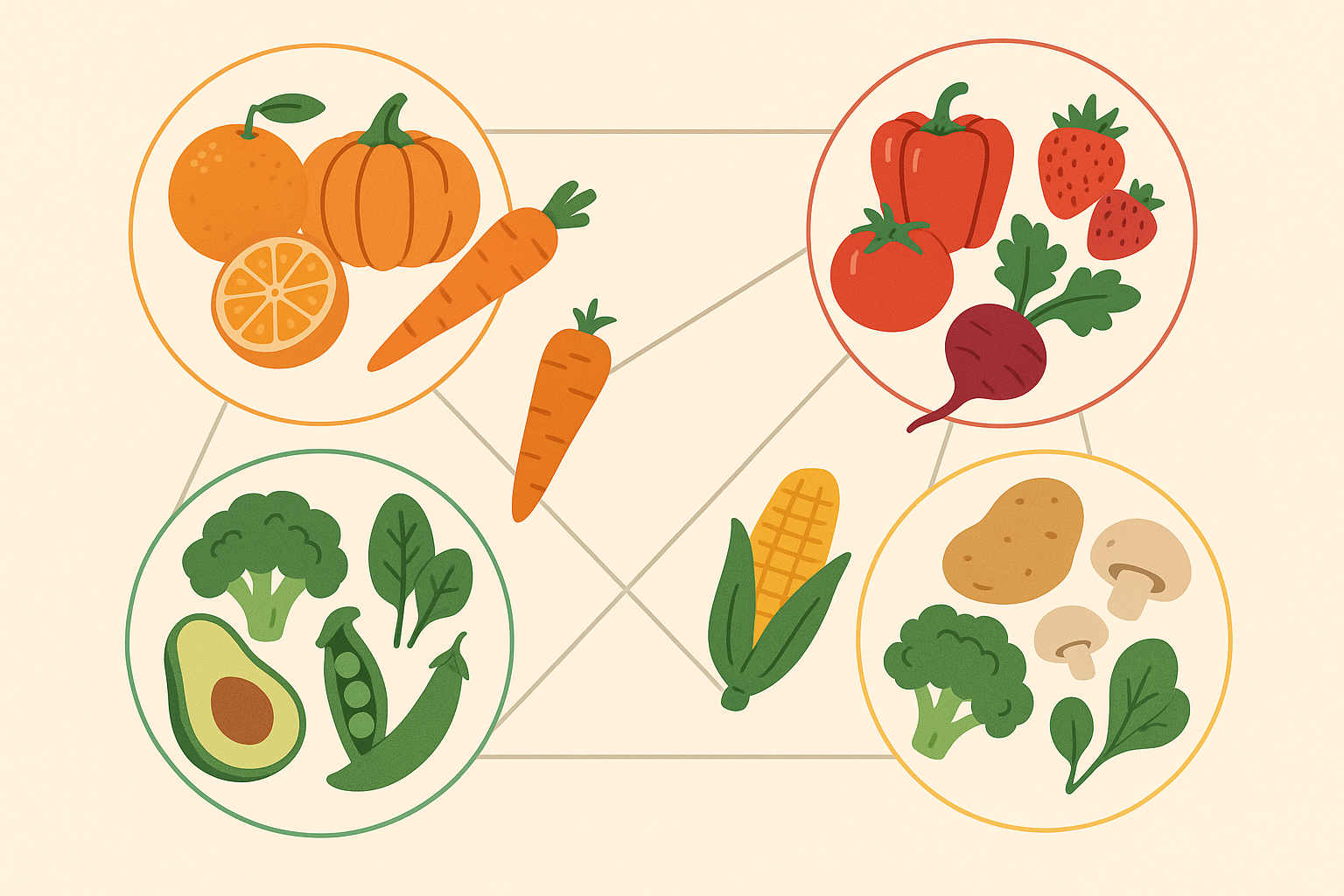
Timing Your Nutrients for Maximum Impact
B-vitamins are a tight-knit group – they work best together. These guys are responsible for turning your food into actual energy at the cellular level, so you want them in your morning meals when you need that energy most.
B12 and folate are particularly tight – they help each other out with absorption. Think eggs with leafy greens, or nutritional yeast on your avocado toast. Magnesium and zinc act as supporting players, helping those B-vitamin enzymes do their job properly.
Iron and vitamin C? They’re best friends. But iron and calcium? Not so much – they compete for the same absorption pathways. This is why timing matters more than most people realize.
The Antioxidant Rotation Strategy
Antioxidants are like security guards for your cells, but they can get territorial about absorption. The solution? Rotate your antioxi dant sources throughout the day and week.
Monday might be blueberry and spinach day (anthocyanins and carotenoids). Tuesday could be orange bell peppers and tomatoes (different carotenoids). This rotation prevents nutrient competition while giving your cells comprehensive protection.
Fat-soluble vitamins (A, D, E, K) need fat to get absorbed, so pair them with your healthy fat sources. Water-soluble vitamins (B and C) are more forgiving, but they don’t stick around long, so you need them consistently throughout the day.
| Nutrient Pairing | Best Absorption Time | Food Combinations | Avoid Combining With |
|---|---|---|---|
| Iron + Vitamin C | Morning with breakfast | Spinach + strawberries | Calcium, coffee, tea |
| B-Vitamins Complex | Morning for energy | Eggs + leafy greens | Alcohol |
| Fat-soluble vitamins (A,D,E,K) | With healthy fats | Carrots + olive oil | Fat-free meals |
| Calcium + Magnesium | Evening for relaxation | Yogurt + almonds | Iron supplements |
Balancing Your Mineral Portfolio
Minerals are the unsung heroes of metabolism. They don’t provide calories, but without them, your body can’t actually USE the calories you’re eating effectively.
Potassium is the big one – you need 4000-4700mg daily, and most people get maybe half that. Real food sources such as potatoes, bananas, and leafy greens are your best bet. Supplements can’t touch whole food sources when it comes to potassium.
The calcium-magnesium relationship is crucial too. You want about a 2:1 ratio, but most people get way too much calcium and not nearly enough magnesium. This imbalance can mess with everything from sleep quality to muscle function.
According to “BetterMe”, “a person on a 2300 bodybuilding diet should eat 2 cups of legumes and beans every week” – these powerhouse foods provide essential minerals such as magnesium, potassium, and iron that most people miss in their daily intake.

Making Your Metabolism Work FOR You (Not Against You)
Now, I know what you’re thinking – this sounds complicated. But stick with me here.
Cookie-cutter meal plans assume everyone’s metabolism works the same way. Spoiler alert: it doesn’t. Your genetic makeup, stress levels, sleep quality, and metabolic history all influence how your body handles those 2300 calories.
The good news? You can figure out your metabolic type through some simple testing and observation. Once you know how YOUR body responds to different foods and timing strategies, you can optimize your 2300 calorie meal plan for sustained energy and body composition goals.
Even elite athletes understand this personalization principle. Recent insights from “BarBend” reveal that four-time World’s Strongest Man Brian Shaw consumes “12,000+ calories a day” with the help of a nutritionist who provides “meal recommendations” while letting Shaw “pick some of his favorite foods” – proving that even at extreme caloric levels, individual preferences and metabolic responses matter.
Discovering Your Genetic Nutritional Blueprint
Your genes aren’t your destiny – they’re more like a rough draft that gets edited by your lifestyle choices. Your food choices can literally flip switches in your genes, influencing everything from how you process carbs to how well you handle stress.
Sulfur-rich vegetables such as broccoli, cauliflower, and Brussels sprouts support your detoxification genes. Omega-3 fatty acids from fish and flax seeds influence inflammation pathways. Polyphenol-rich foods including berries, green tea, and dark chocolate can activate longevity genes.
The key is consistency. These changes happen over weeks and months, not days. But when they do happen, the results can be pretty remarkable.
Finding Your Personal Carb Sweet Spot
Some people thrive on higher carbs, others feel better with moderate amounts, and a few do best keeping carbs relatively low. The only way to know where you fall is to test it systematically.
Start by tracking how you feel with different carb amounts – 40%, 50%, 60% of your calories. Pay attention to energy levels, cravings, sleep quality, and mood. If you have a glucose monitor, even better – you can see exactly how different foods affect your blood sugar.
Your activity level matters too. Training days might call for higher carbs, while rest days might be better with more fats and protein. There’s no one-size-fits-all answer here.
For a systematic approach to testing your carb tolerance, consider these 3 easy steps to find your carb tolerance using keto principles as a baseline.
Data from “Eat This Much” shows their sample 2300 calorie meal plan averages “2272 Calories, 164g protein, 88g fat, and 230g carbs (185g net carbs)” – representing about 40% carbs, which serves as a solid baseline for most people to test their individual tolerance from.
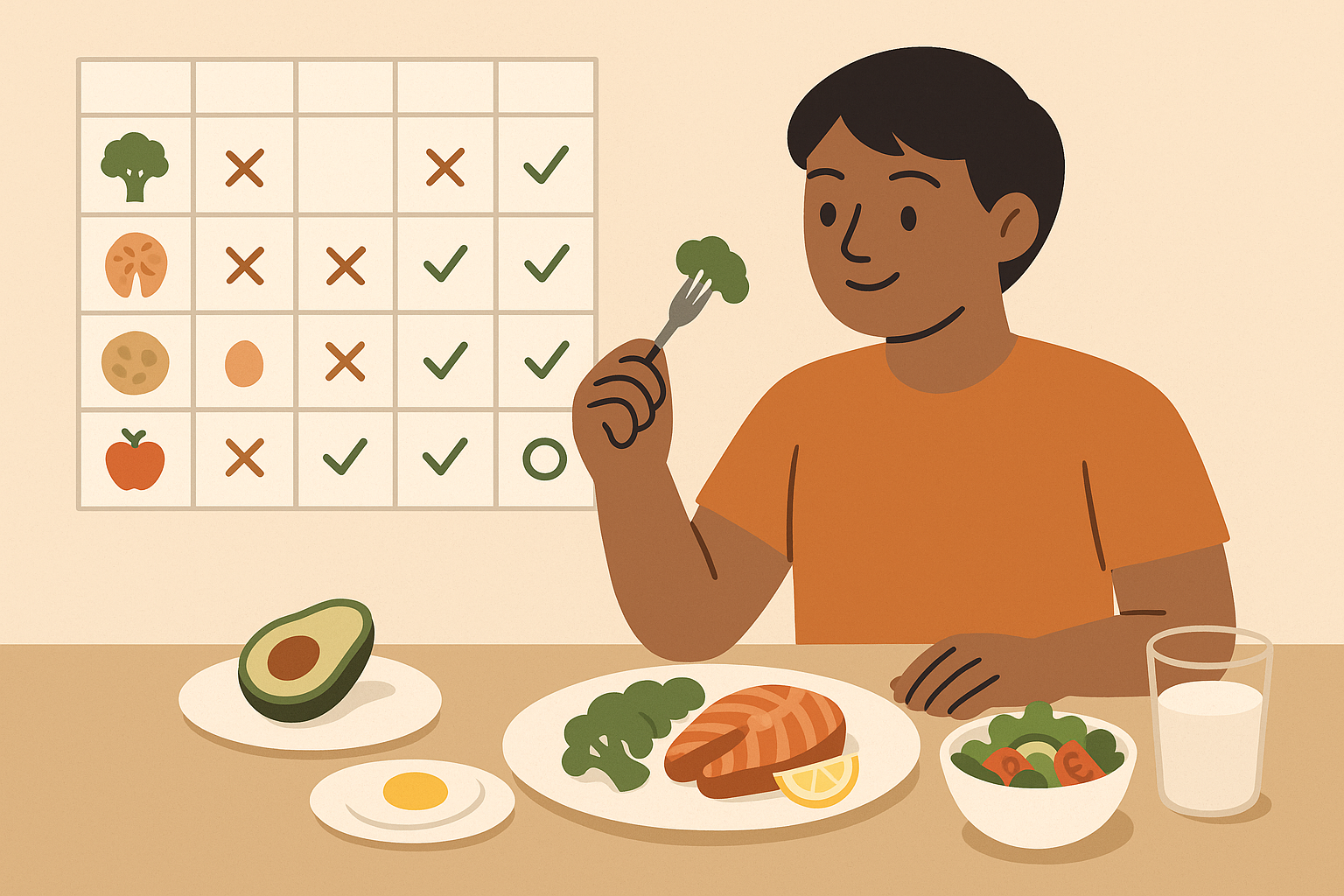
Training Your Body to Burn Fat Efficiently
Training your body to be good at burning whatever fuel you give it isn’t about going full keto (unless that works for you). It’s about gradually teaching your system to efficiently use fat for fuel, which can lead to more stable energy and better appetite control.
Fair warning – the first few days of increasing your fat intake might make you feel like you ate a stick of butter. Start slow unless you want to become very familiar with your bathroom.
Try gradually increasing your fat intake to 35-40% of calories while reducing carbs proportionally. Include MCT oil for quick ketone production, but don’t go overboard – start with a teaspoon and work up slowly to avoid digestive issues.
Monitor how you feel during this transition. Some people feel amazing within a few days, others need several weeks to fully adapt. Pay attention to your energy levels, workout performance, and overall well-being.
Turning Theory Into Your Daily Reality
Let’s get practical for a second. All this science is great, but it doesn’t mean much if you can’t actually implement it in your daily life. The gap between knowing what to do and actually doing it consistently is where most people get stuck.
The key is creating systems that work with your lifestyle, not against it. You need practical strategies for hitting your protein targets, timing your nutrients, and maintaining variety without spending your entire day in the kitchen.
Here’s a realistic daily meal structure that actually works: Breakfast at 7 AM (650 calories, 40g protein), lunch at 12 PM (600 calories, 30g protein), post-workout snack at 4 PM (350 calories, 30g protein), dinner at 7 PM (700 calories, 30g protein). This hits 2300 calories with 130g protein distributed optimally throughout the day.
Converting theoretical understanding of protein leverage and metabolic timing into actionable meal structures requires specific strategies for achieving 150-180g protein within your 2300 calorie meal plan high protein framework while addressing real-world challenges such as digestive comfort, meal preparation, and sustainable implementation.
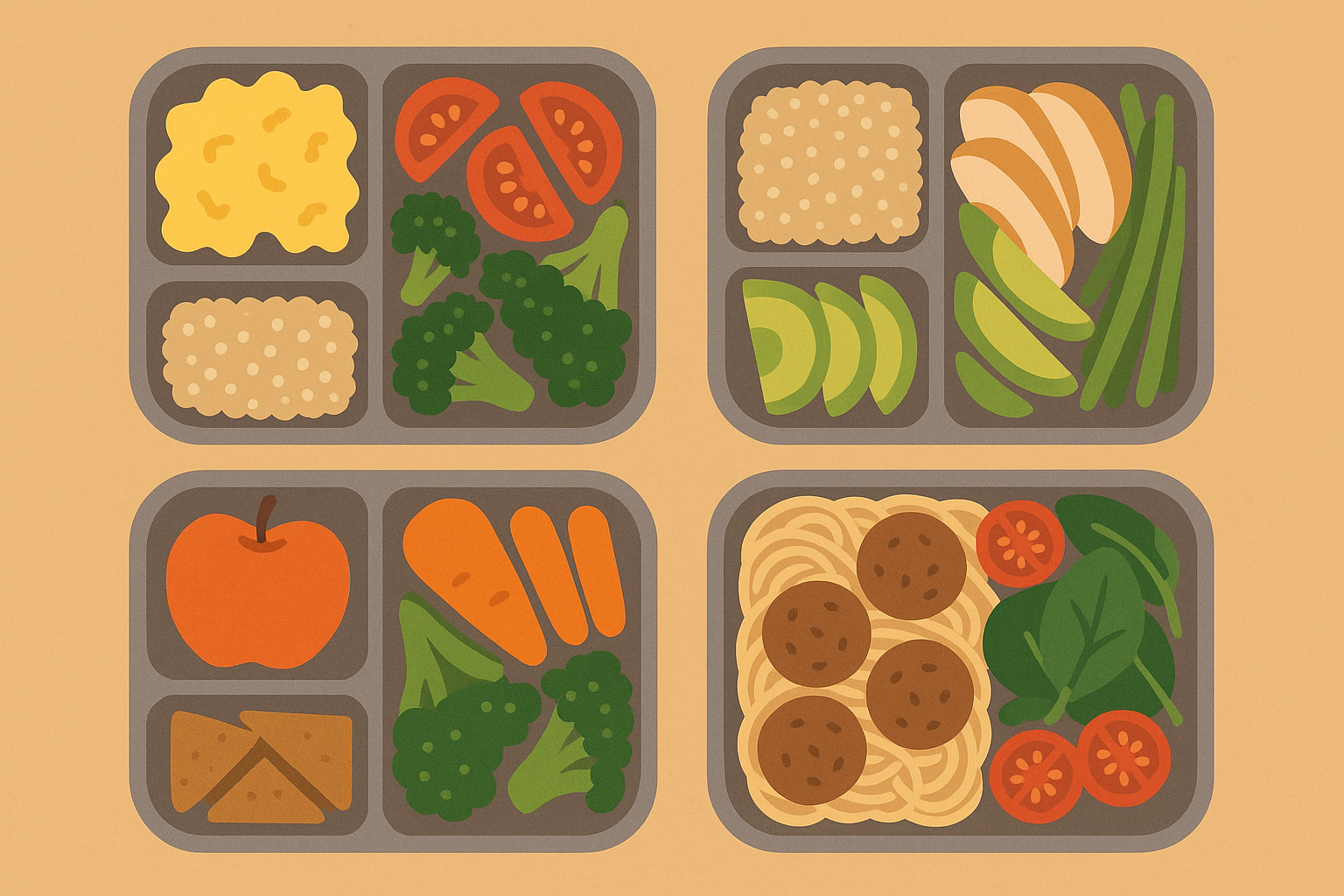
The 40-30-30-30 Protein Distribution System
Here’s a protein distribution that actually works in real life: 40g at breakfast, 30g at lunch, 30g at dinner, and 30g as a strategic snack or post-workout meal.
That breakfast protein load might seem high, but it’s easier than you think. Eight egg whites plus two whole eggs gets you 32g protein for about 200 calories. Add some Greek yogurt or a protein smoothie, and you’re there.
The afternoon protein can come from a quality protein powder mixed into a smoothie with some fruit and spinach. Easy, portable, and it keeps you satisfied until dinner without feeling heavy.
Your digestive system needs support when you’re pushing protein this high. Include bitter greens such as arugula or dandelion with your meals – they stimulate natural enzyme production. Fermented foods including sauerkraut, kimchi, or kefir with each protein-rich meal also help with digestion and absorption.
Maximizing Protein Quality Within Your Calorie Budget
Protein quality matters just as much as quantity when you’re working within a calorie limit. You want the biggest bang for your nutritional buck.
Complete proteins (containing all essential amino acids) include animal sources, quinoa, hemp seeds, and spirulina. But you can create complete proteins by combining plant sources – beans with rice, hummus with whole grain pita, or lentils with nuts.
The timing doesn’t have to be perfect either. As long as you get complementary amino acids within 4-6 hours, your body can piece together what it needs.

Preparation Methods That Actually Matter
How you prepare your protein sources can make or break their effectiveness. Soaking and sprouting legumes isn’t just hippie nonsense – it actually improves digestibility and makes amino acids more available.
High-heat cooking methods such as grilling can damage some amino acids, especially in processed meats. Gentler methods including steaming, poaching, or slow cooking preserve more of the protein’s nutritional value.
Including vitamin C sources with plant proteins enhances absorption. Think lentil soup with tomatoes, or chickpea salad with bell peppers. These combinations aren’t just tasty – they’re scientifically sound.
When you’re consuming this much protein, digestive enzymes become crucial. If you’re feeling bloated or uncomfortable after high-protein meals, consider a digestive enzyme supplement with meals over 35g protein.
The beauty of this approach is that it works with your body’s natural processes instead of fighting against them. You’re not forcing anything – just optimizing what’s already there.
For additional digestive support when implementing these high-protein strategies, explore drinking vinegars as the next big thing for gut health to enhance protein digestion and absorption.
Remember, Organic Authority offers high-quality digestive support supplements that can help you maximize protein absorption and comfort as you implement these strategies. Their carefully vetted products align with the same conscious approach to nutrition that makes this meal planning system so effective.
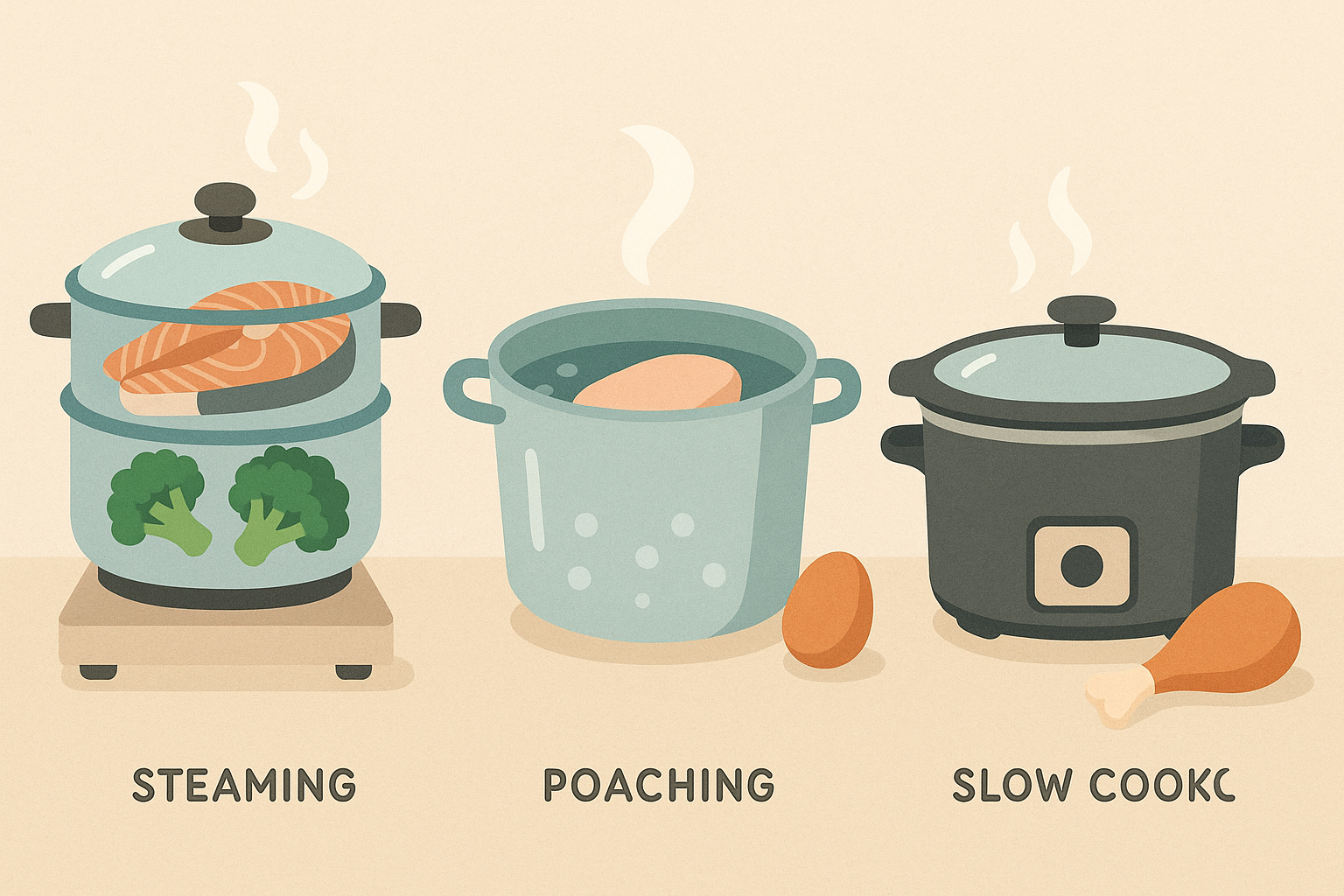
Final Thoughts
Look, I’ve thrown a lot at you here, and I know it might feel overwhelming. But here’s the thing – you don’t have to do all of this at once. Hell, you don’t have to do any of it if it doesn’t feel right for your life.
Your 2300 calorie meal plan doesn’t have to be another diet that you start Monday and abandon by Thursday. When you understand the science behind nutrient timing, protein distribution, and metabolic flexibility, you’re not just following rules – you’re working with your body’s natural intelligence.
Start with whatever made you go “huh, that makes sense.” Maybe it’s eating your carbs in the morning, or spacing your meals further apart, or just paying attention to how different foods make you feel.
I’ve been tweaking my eating for years, and I’m still learning stuff. The goal isn’t perfection – it’s just feeling better than you did yesterday. And honestly? That’s more than enough.
Your metabolism is incredibly adaptable, but it needs consistency to make lasting changes. Give these approaches at least 2-3 weeks before deciding if they’re working for you. Your body needs time to adjust to new patterns and rhythms.
Most importantly, remember that this is YOUR plan. Use the science as a framework, but listen to your body’s feedback. Energy levels, sleep quality, mood, and how you feel during workouts are all valuable data points that should guide your adjustments.
The difference between success and frustration often comes down to implementation. Take what works, modify what doesn’t, and build a sustainable approach that fits your life. Your 2300 calorie meal plan should enhance your lifestyle, not control it.
Oh, and one more thing – if you try this stuff and it makes you miserable, stop. Life’s too short to stress about the perfect meal timing. Sometimes good enough is actually perfect.

